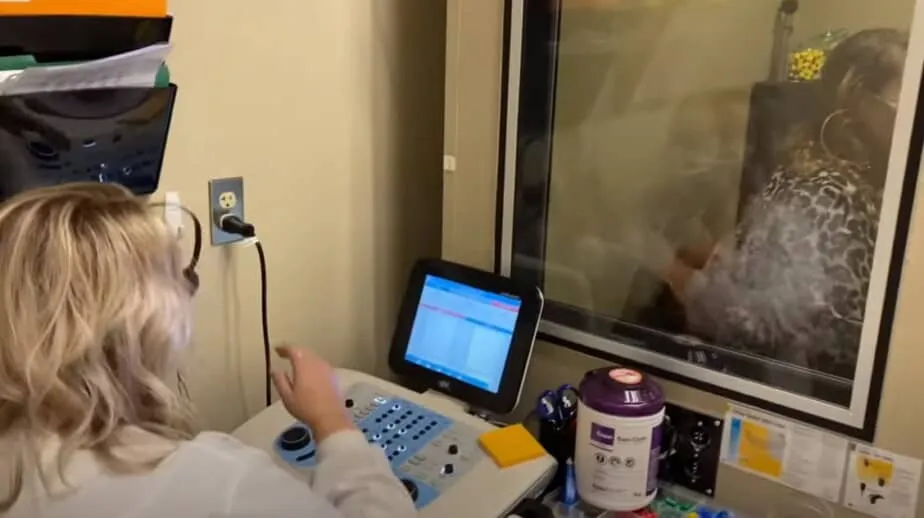As an audiologist with 15 years of experience, I’d like to share some insights on the process of measuring hearing loss. When you suspect that you may have a hearing impairment, a comprehensive hearing evaluation is conducted by an audiologist to determine if your hearing falls within the normal range or to determine the type, configuration, frequencies, and severity of your hearing loss.
The hearing evaluation process is much more comprehensive than most people realize. One of the key methods used to measure hearing loss is through the use of a calibrated audiometer. During this test, the audiologist presents different tones at varying intensity levels (measured in decibels) and frequencies to determine at which point you respond to a sound 50% of the time. The results of this test are plotted on an audiogram.
In addition to this test, there are other less common methods used to measure hearing. As an experienced audiologist with many years of experience, I hope to provide the most comprehensive and detailed information on this subject in an easy-to-understand manner. While I could write a textbook on the subject, my aim is to share my knowledge in a friendly and accessible way.
Getting Audiometric Results – Creating an Audiogram
I’d like to provide additional information on the process of measuring hearing loss. There are various methods used to determine the extent of a person’s hearing ability, but the most common is self-reported responses to sounds or tones played through headphones or insert phones. The responses are then plotted on an audiogram, which provides a visual representation of a person’s hearing ability.
During the test, the individual is instructed to respond every time they hear a sound, even if it is faint. The response can be given by raising a hand, pressing a button, saying “yes”, or for children, by throwing a toy in a bucket.
The audiologist generally tests specific frequencies in each ear to create an audiogram, including 250Hz, 500Hz, 1000Hz, 1500Hz, 2000Hz, 3000Hz, 4000Hz, 6000Hz, and 8000Hz, which represent octave and half-octave frequencies. In some cases, additional frequencies may be tested if there is a specific reason to do so.
The result is recorded when the individual responds to the presented tone 50% of the time, known as the threshold. To ensure accuracy, the tone is usually presented three times, and the individual must respond at least twice out of the three times.
What is an Audiogram
The results are graphed onto an audiogram, which displays a person’s hearing ability in a visual format.
The x-axis of the audiogram represents the frequencies tested, ranging from low bass frequencies on the left to higher treble sounds on the right, similar to the keys on a piano.
The y-axis represents the intensity of the sounds, but it is graphed upside down, with better results plotted at the top and poorer results plotted at the bottom.
Hearing loss is measured in decibels (dB). The higher the decibel number, the greater the hearing loss and the worse the hearing. For example, a hearing loss of 20 dB would indicate a mild loss, while a hearing loss of 80 dB would indicate a severe loss.
Understanding Degrees Of Hearing Loss
Patients often seek to categorize their hearing loss, but this can be difficult as hearing loss varies across different frequencies. An individual might have normal hearing at 250Hz, moderate hearing loss at 2000Hz, and severe hearing loss at 8000Hz. To avoid giving a percentage, audiologists do not provide one. Hearing loss is measured in decibels, not percentages, and decibels are logarithmic, making them difficult to interpret as such. If an adult’s thresholds are below 25dB, they are considered to have normal hearing.
The following categories are used to describe hearing loss:
- Mild = 26-40dB
- Moderate = 41-55dB
- Moderately severe = 56-70dB
- Severe = 71-90dB
- Profound = 90+dB
When an audiologist talks about the severity of the hearing loss we are reporting on the air conduction thresholds or the ones in which you listened to sounds using headphones or insert phones.
We also test thresholds with the same beeps but using what is known as bone-conduction headphones. It is a small box that sits on the mastoid behind the ear and vibrates the whole skull.
Those vibrations are picked up by the ear. The difference between the air conduction scores and the bone conduction scores indicated the type of hearing loss that you have either sensorineural, conductive, or a combination of the two which is known as mixed hearing loss.
Even mild hearing loss can benefit from hearing aids. If you have a mild or moderate loss you can use OTC hearing aids, if it is greater you need professionally fit devices. See our current recommended hearing aids.
Word Recognition Scores

As a professional audiologist, it’s important to clarify that the percentage score of hearing loss referred to earlier is actually a speech recognition score. To determine this score, we conduct a word recognition test, where the patient is asked to repeat back a list of 25 words, presented at a loud, clear volume in a quiet environment without distractions, in each ear.
The results of this test, along with the pure-tone audiometry results, which measure the minimum sound level a person can hear, provide insight into how distorted the sounds are perceived by the patient and inform us about the best outcomes that can be expected with the use of hearing aids.
Other Methods to Measure Hearing Loss
In addition to the subjective word recognition tests, there are objective tests that can be used to measure hearing loss. These tests include OAEs (Otoacoustic Emissions), ABR (Auditory Brainstem Response), and ASSR (Auditory Steady-State Response). These tests measure the function of the cochlear hair cells or the response transmission to the brainstem and provide objective data on hearing ability.
However, it is important to note that these tests only assess hearing ability and not the patient’s ability to understand and process auditory information, which is crucial in everyday listening scenarios.
These objective tests are particularly useful in cases where subjective responses are not feasible or reliable, such as in the case of newborns, or when there is a suspicion of malingering. Additionally, these tests can provide additional information that can complement the results of the subjective tests, helping to paint a more complete picture of a person’s hearing ability.
See also our article on how exercise can affect hearing loss.
Related Questions
What is the range of human hearing? Humans can hear a frequency span between 20Hz and 20,000Hz. However, by adulthood, most no longer hear the ultra-high frequencies. Most hearing tests only test through 8kHz because no speech information is contained about that. 8k-18kHz tones are tested on occasion for things like ototoxic monitoring.
Can you improve your hearing loss? Hearing loss can be treated with the use of hearing aids or cochlear implants however there is still no cure for hearing loss but stem cell treatment and drug therapies are in the research and testing phase.
How is sensorineural hearing loss treated? Sensorineural hearing loss is typically treated with hearing aids. But sensorineural hearing loss can not be cured. See how hearing aids help.
